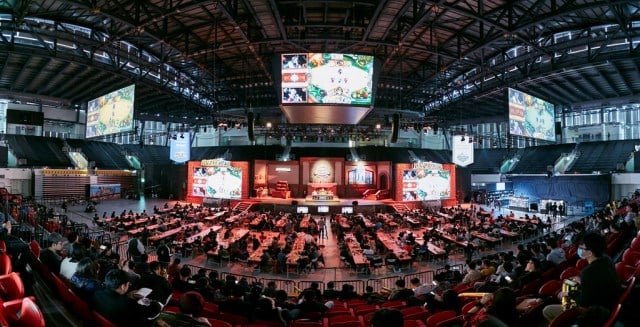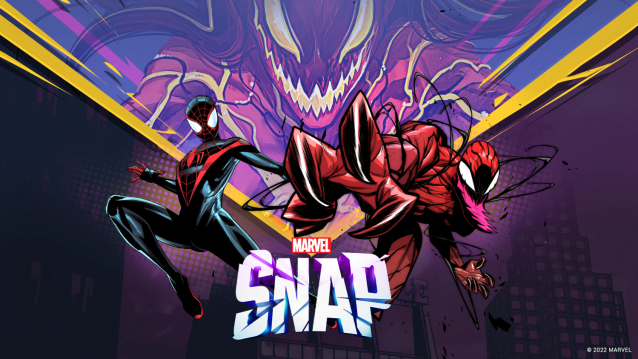From the endless Ultimo and Schnapsen sessions at home to Hold’em poker in dodgy bars in my teenage years and beyond, card games always found a way to seep into my life. In the virtual world, it began with a trickle of flash games, which eventually turned into a flood with Hearthstone, spawning a writing career and some tournament heartbreaks. Almost a decade later, I think it’s time to call it quits, because digital card games have turned into something very different than they used to be.
I’d rather not dwell too much on those old days when I grinded midnight poker freerolls, consoling myself after narrow losses that at least I was better than 2,877 adults. Let’s just say that understanding and manipulating my odds, trying to make something out of nothing, appealed to me greatly. I grew into a Jimmy/Spike, someone looking to win but very much on his own terms. Then along came Hearthstone at the cusp of my young adulthood, and it offered me the chance to do just that.
I’m as far from a graphics snob as you can get, and I was very much burrowed into the emerging indie scene, from flash games to The Binding of Isaac and Spelunky and co. (good times.) But I distinctly remember becoming interested in Hearthstone because of just how good it looked, watching TotalBiscuit’s review (and further wacky escapades) with joy, especially because he and others got to play with cards and decks I didn’t have the means to earn.

Back then, Hearthstone was a very different game. For one, everyone was significantly worse, including myself. Content releases were a lot slower, and it took significantly longer for the community to figure out the best builds.
There was such newness to everything that we hadn’t yet begun to question many of its more concerning aspects: The predatory monetization, the unreliable schedule, the poor tournaments. It felt like the Unity-based tech demo achieved much more than anyone could have ever expected, but surely there would be an overhaul someday, right?
That overhaul never came, and likely never will. Instead, we got a mobile client, a tournament mode was canned for the “weekly wacky stuff” Tavern Brawl mode, and Hearthstone is now tangled in knots of tech debt, transitioning more and more into what it has been for many years: A predatory mobile game.
This isn’t just me relitigating my old complaints about Blizzard’s card game. Anyone with a good understanding of card games would agree that Hearthstone had substantial competitive potential early on, and that its competitive potential evolved over the years and subsequently diminished. As Adrian “Lifecoach” Koy, a successful poker pro put it, “you don’t get rewarded, you get punched in the face.” It’s this transformation that has tracked with how the genre and industry have developed in the years since Hearthstone launched.
Back in the Classic days, despite all its wackiness, Hearthstone at a high competitive level was all about managing limited resources. Whether you’re an aggro deck with a limited number of turns to finish the opponent off before the cavalry arrives, a combo deck with a ceiling of damage from hand, some of which you might have to burn on minions, or a control deck with a finite amount of big bombs and threats, you had to optimize what you were doing—as well as tracking your opponents plays.
Sure, there was a lot of randomness already, but that’s true for all card games, and most allow for a large enough sample size to mitigate it. In the olden days, cards like Mad Bomber were interesting rather than good.
Later on, as deck trackers emerged, stat-based online analyses sped up how players solved the metagame, and as mobile playerbase’s expectations of faster releases and more balance changes reached a crescendo, the game began to develop a “who can manage surprise shifts better” mindset, with “created by” cards everywhere, endless resources generated left and right, cost and stat considerations going out of the window, and everything getting bigger and better and more random to keep players’ attention.
Remember Day9 getting annoyed about summoning larger and larger men? He, frozen at that moment in time, is my spirit animal.
Veteran players may also remember that the Year of the Raven, when the developers really attempted to rein in the power level of cards, was also when the game irrevocably lost a large chunk of its casual player base. Simply put, this is what the audience wants—or, rather, what they think they want, for they also didn’t stick around for a long time, developing an ever-larger tolerance for hijinks until they eventually stop caring.
Not to be crass, but as someone who got started out writing about Hearthstone, it was always a great metric of the success of a card game whether someone was willing to pay me to cover it. I loved the original standalone Gwent, but alas, no one cared. Soon after, the developers completely revamped the game and added a single-player version, but it all tanked, then the game ceased to be. Artifact is a legendary story of failure in its own right. I doubt any of you even remember Elder Scrolls: Legends. Legends of Runeterra has also regressed to the point of near-collapse. When Valve and Riot both fail to make a popular product in the genre, maybe the issues go deeper.
Sure, there are still success stories—but they are simply not for me. I downloaded MTG Arena on a lark, took a mono red deck to Mythic, then realized just how much of a grind it would be to get a proper collection, and stopped playing soon after. Somewhere along the way, I turned into an adult, with some decent disposable income, no longer wielding a complete F2P collection as a mark of success, and I found myself having no interest in experiencing a nonexistent tertiary loop at the highest levels of play.
Recently, Marvel Snap was a significant culture shock for me. I had a lot of faith in Ben Brode’s work, and initially, I loved the fundamental ideas of the game, the ability to bet and bluff while optimizing your strategy, and the potential to capitalize on poor players’ misjudgments. The game has a lot of things I missed about the original Hearthstone with a stronger emphasis.
And then, a new location appeared. Then another. And a bunch of new cards. All this in just a few weeks. More battle passes and missions to complete, making it clear that I’d need to play with work-like regularity for months to even get a chance at acquiring some of the more meaningful content. As someone who isn’t otherwise involved with mobile gaming, the pressure and psychological tricks triggered an allergic reaction that made me sneeze out Snap as a whole.

Ultimately, the reason I stopped playing was something else entirely: I found the deck archetypes aggressively pre-baked and very boring to play. I made it to the verge of Infinite with a homebrew concoction, and after exploring the meta builds that tier 2 had to offer, I quickly concluded that this game was not for me—especially when it would have taken absurd levels of grinding for a chance to play with the good cards.
This was the same with Hearthstone, especially in the later years: My all-time favorite decks are essentially a collection of random powerful tools, like Tempo Warrior from Whispers of the Old Gods and Keleseth Rogue. These decks were much more fun to play than today’s obviously pre-packaged archetypes, where most cards have the same keyword and the synergy is so powerful that they’ll inevitably be nerfed two weeks after launch. So much for quality control.
If Snap is the future of the genre (and modern Hearthstone, with its billion-dollar lifetime revenue and unbalanced husk of a shambling corpse, is the genre’s present), then it’s all the better that I’m out. By summer of this year, I was discreetly told by multiple publications that reader counts were no longer what they used to be, and that they could no longer justify Hearthstone-related expenses. This was especially awkward to hear from a Hearthstone-exclusive publication. A large part of me was glad. It was long past time to stop playing.
To chase a paying audience, digital card games turned the spectacle up to 11 and turned to predatory monetization schemes and unmanageable release schedules, cannibalizing their future for a mediocre present. Then again, perhaps I should have seen it coming. Why would strategy-optimizing strong players looking to spend their resources in an efficient manner ever become the relevant audience in a genre where the explicit design goal is to let even the poorest player score the occasional win against the best?
So, I found myself back playing poker, as an adult with a disposable income, going full Timmy at the digital felt. I gleefully threw away a couple hundred bucks to celebrate WCOOP, and it’s been a reasonable experience. After all, Hold’em has remained the same since I left, with the exception of solvers, which is a level of understanding I’m no longer interested in reaching.
I’ll leave being a Spike to IRL matters. As for card games, I’m much more of a Johnny now, no longer fixated on winning. I don’t want to grind, and I don’t enjoy the enhanced randomness. So, I might as well accept that the genre has passed me by. No harm, no foul: I’m just folding a bad hand.













Published: Sep 30, 2023 9:41 AM UTC